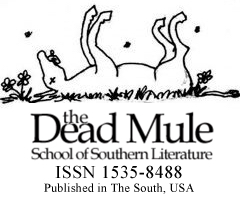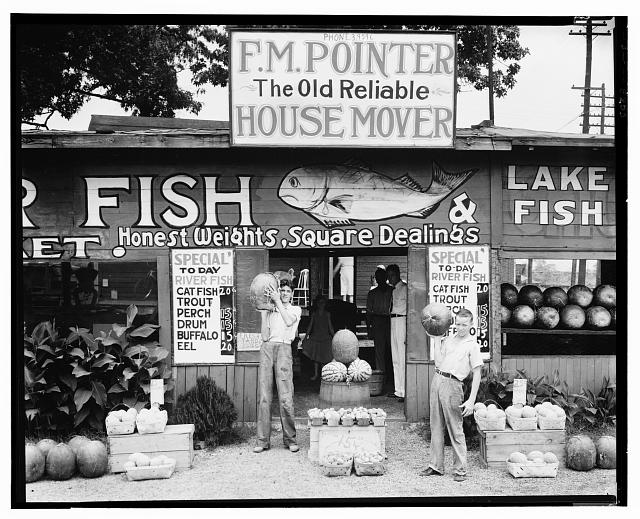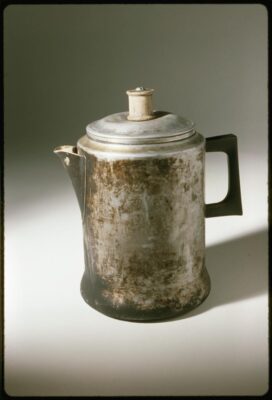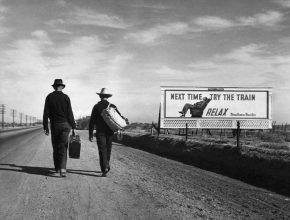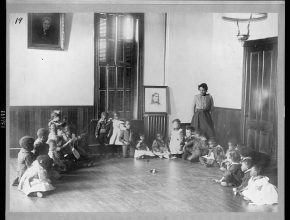An Outsider’s View of Guns and the Men Who Shoot Them
My daughter, born and raised in Virginia, had already sided with Robert E. Lee by the time she was five. Maybe it was all those Civil War reenactments we enjoyed over the years. Or perhaps it was all those conversations we had, where I tried to present a balanced view of states rights vs. federal jurisdiction, that pushed her toward feeling that, like Lee, Virginia and its values was not just her state, but her country.
My son, also southern bred, seemed to enlarge his libertarian views with every inch of his growing height. Man Day—where he and his twenty-something buddies drink beer, smoke cigars, and shoot targets on the private property of an apple orchard, is now a long-standing tradition. The right to make choices for themselves is something my son and his friends feel very strongly about.
Unlike my children, I am not native to the south. While I have spent most of my adult life in rural Virginia, and several of my acquaintances are gun owners, I still sometimes struggle with the idea of weaponry and its potency to kill. I understand that if our hunters didn’t manage the deer population, so many of those speckled fawns that we enjoy watching cavort across hay fields in late spring would die of starvation in their first winter. But I have never had the slightest desire to shoot a buck myself. In fact, I have never even cared to find out what it feels like to pull the trigger of a firearm at all—until now.
As I writer I get all kinds of unusual assignments. Currently I am contracted by a retired army psychologist to tell the story of a former patient whose duty as a soldier in early 1950’s Europe was competitive long-distance target shooting. But, in secret, this soldier was a sniper who used his military issued rifle to hunt Nazi war criminals. Of course the book would be intriguing to any writer. But I have one problem—and it is a big one: I know nothing about guns.
I started my firearm education, hoping that watching movies and reading books would be enough. But soon I was convinced that I needed to meet knowledgeable enthusiasts and gain first-hand experience in order to write my novel more authentically. Through an internet search I found a vintage rifle match that would be held about an hour from my house. It was open to the public. Here was my opportunity.
On a sunny weekend morning I drove through the countryside and to the rifle range with both hesitancy and expectancy. I had asked two male friends to accompany me, but each had different conflicts that day, so I was a lone woman, pushing way past the boundaries of my comfort zone, into a largely male sport. The unknown is an adventure, I kept telling myself. Who knows what will happen?
I had imagined two scenarios upon arrival. One: I say I am a writer, start asking questions, and immediately a 300 pound militant NRA guy takes me by the arm and escorts me off the property. Two: I say I am a writer, start asking questions, and immediately very friendly riflemen gather around, letting me pump them for information while they demonstrate their shooting techniques.
Not knowing where the long-range shooting field was, I found the trap range first, took a deep breath, and got out of the car. I knew enough, at least, to stay behind the firing line and to keep quiet until the round was over. I settled onto a bench and just tried to focus on the shooters.
“Pull!” they yelled. Then they gauged the trajectory of their clay pigeons and fired their shotguns just in front of where they expected their targets to fly. With each hit, pieces of clay scattered into the wind. And with each hit, I was fully engaged, losing all sense of my own intimidation through my admiration of their skill.
After the round, I went up to one of the shooters and said, “Hi, I’m a writer. Can I ask you a couple of questions?”
Before that man could even answer, the very real flesh and blood persona of my imagined Scenario Number One loomed in front of me. He was 300 pounds. He was militant. He was every NRA stereotype possible. And he escorted me off the property.
“We don’t allow the press here,” he said.
“But, I’m not the press,” I answered. “I’m just a writer trying to get information . . .”
He cut me off. “We don’t allow writers here at all. This is private property. You have to get permission to come here.”
“But,” I protested weakly, “both your website and the sign at the entrance said you welcome the public.”
“I need you to leave now,” he growled. “And don’t even think you can write anything unless you get authorization from us first.”
I sat in my car for a few moments, tears stinging my eyes.
Maybe the press sometimes does have real reasons to portray people who own guns in a bad light, I thought.
Driving down the hill, I felt defeated. But when I turned a corner and saw the sign for the long-distance range, I parked the car and screwed up my courage to try again.
What is the protocol here? I wondered.
I didn’t even know enough to wear ear protection, and as I was climbing the stairs, a rifle shot boomed in my left ear. On the covered platform there were five men—some seated, some standing—all shooting at targets that were 200 yards away. Most stopped as soon as they saw me.
“Hi, can I help you?” one of them asked.
Before I could answer, another came forward.
“Here. Put these on,” he said, handing me protection muffs. “Just covering your ears with your hands isn’t enough.”
I thanked him, put the muffs on, and sat on a bench. The men went back to their shooting.
“You’re flinching right before you pull the trigger.” A veteran in his late fifties was instructing a teen-aged boy. “You can’t muscle this. It’s all about being relaxed.”
I watched another shooter sit at his bench, take a long time to aim, and then calmly fire at a target so far away it seemed impossible to hit. But when the shooter looked into his spotting scope, he commented that he had done well. Once again, watching these riflemen hone their skill, I was moved out of my intimidation through my hunger to learn.
When the men called a ceasefire, I went over to one of them and said, “Hi, I’m a writer. Can I ask you a couple of questions?”
The riflemen all gathered around me. When they heard about my book, each had opinions as to what kind of gun my soldier would have used.
“Mostly likely it was a M1 Garand,” said one.
“Or maybe the A-4 1903 sniper rifle,” said another.
“Too bad that you just missed our vintage competition,” said a third. “It finished early.”
Then someone stretched out his hand in welcome.
“I’m Steve,” he said. ‘Have you ever shot a gun before?”
“Once,” I said. “When I was about 15, a friend talked me into trying his 12 gauge shot gun, but he didn’t show me anything. All he said was, ‘pull the trigger.’ The gun recoiled into my shoulder so hard that I fell backwards.”
“Well,” Steve said, “let’s see if we can give you a better experience here.
He sat me on the bench with his M14, showed me how to position the gun, and then taught me to look through the sight so that I was lining up the post to just below the black dot of the target. When I was ready, I pulled the trigger.
I’m not sure anyone can fully describe their first high-powered rifle experience—the force of the gun in your hands, the sound of the shot in your ears, the knowledge that in just milliseconds your bullet has hit its target over two football fields away—and the adrenaline that pumps through it all.
Steve looked through the spotting scope.
“You’re going to want to see this,” he said.
Through the telescope I could view the target clearly.
“That mark in the 8 ring at about 3’oclock is yours,” he said. “That’s a great first shot! Do you want to try another one?”
“Absolutely!” I said.
Because Steve instructed me on how to move the rifle just a hair this way or that, with each try I got better. My last bullet hit just to the left of 6’oclock in the ten ring.
“Are you sure you haven’t shot before?” Steve asked, with a wide grin.
If I had left the shooting ranges right after my encounter with Mr.-300-Pound-NRA-Stereotype, I never would have met Steve and his friends. My son, who cares so much about individual freedom, would say that I don’t need to beg permission from anyone to write what I have experienced or what I believe. It’s a good thing, then, that these gracious riflemen made my Scenario Number Two come true much better in real life than what I had imagined.
These men more than made up for my negative first impression. Not only did I gain knowledge for my novel, but more importantly, I developed a new appreciation for firearms and for why so many Americans are passionate about them.
To me these riflemen represent the true gentleman gun owners of the south. They share that same kind of decency and respect for others that Robert E. Lee emulated so long ago.
And this conduct of kindness is what 5-year-old schoolgirls and 50-year-old women still fall in love with today.
